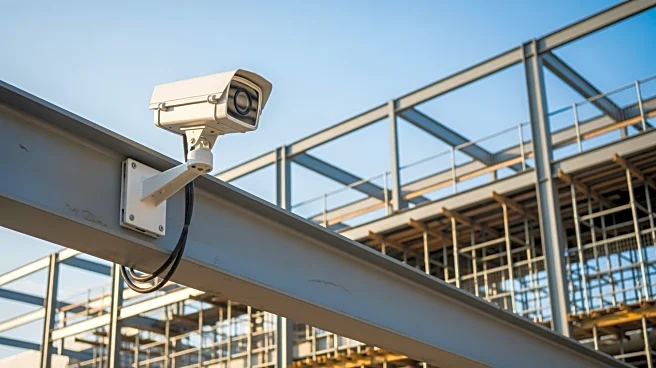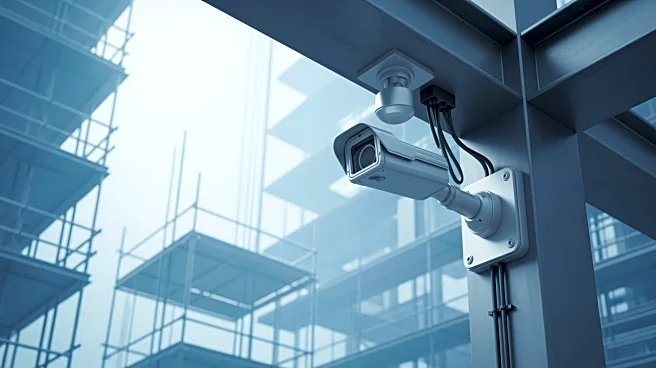What's Happening?
A new safety technology, Arrowsight, has been implemented at New York City construction sites, leading to a significant reduction in workers' compensation claims. Arrowsight uses video-based behavioral
modification and coaching analytics to monitor job sites, flagging unsafe practices such as improper use of safety harnesses or dangerous maneuvers under suspended loads. Zurich North America, an insurer, has announced it will only insure construction projects that utilize Arrowsight's video analytics and coaching. A pilot program demonstrated a more than 70% reduction in claims and a near elimination of racketeering charges when Arrowsight was used.
Why It's Important?
The implementation of surveillance technology like Arrowsight at construction sites represents a significant advancement in workplace safety, potentially reducing insurance costs and improving worker safety. This technology could set a precedent for other industries, encouraging the adoption of similar systems to minimize workplace injuries and associated costs. The reduction in claims could lead to lower insurance premiums and increased profitability for construction companies, while also enhancing worker safety and reducing legal liabilities.
What's Next?
As Zurich North America has committed to insuring only projects with Arrowsight technology, other insurers may follow suit, potentially making video surveillance a standard requirement for construction site insurance. This could lead to broader adoption of similar technologies across various industries, further driving down workers' compensation claims and improving safety standards. Construction companies may need to invest in such technologies to remain competitive and compliant with insurance requirements.
Beyond the Headlines
The use of surveillance technology raises ethical and privacy concerns, as constant monitoring could be perceived as intrusive by workers. Balancing safety improvements with privacy rights will be crucial as this technology becomes more widespread. Additionally, the reliance on technology for safety could shift the focus from traditional safety training and human oversight, potentially leading to new challenges in workplace safety management.











